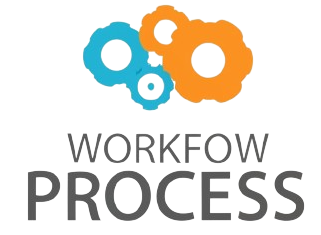Embedding in AI is a fundamental concept that underpins many advances in artificial intelligence, particularly in natural language processing, computer vision, and recommendation systems. At its core, embedding refers to the process of converting complex data—like text, images, or sounds—into continuous vector representations that machines can interpret and analyze. This approach allows AI models to understand relationships, similarities, and patterns beyond simple keyword matching or binary classifications. In this article, we will explore what embeddings are, how they work, their role in AI applications, and why they have become crucial for building intelligent systems. Each section will include real-world examples that clarify the power and versatility of embeddings in modern AI.
What is embedding in AI?
Embedding in AI is the representation of discrete items (like words, phrases, images, or even users) as points in a continuous vector space. Instead of treating data as raw symbols or categorical labels, embeddings capture contextual and semantic information in a dense, numeric form that algorithms can process effectively.
For example, in natural language processing, the word king might be represented as a 300-dimensional vector where each dimension corresponds to latent semantic features. Interestingly, embeddings allow for mathematical operations such as king – man + woman ≈ queen, demonstrating how relationships between words are encoded.
Practical example: Google’s Word2Vec, introduced in 2013, revolutionized language understanding by generating embeddings for words based on the context they appear in. This ability allowed search engines to improve relevance by understanding user queries more like humans do.
How embeddings are created and trained
Embeddings are typically learned through machine learning techniques that map input data into a lower-dimensional continuous space while preserving semantic relationships. Popular methods include neural networks trained on large datasets, such as skip-gram and continuous bag-of-words models (Word2Vec), GloVe, and transformer-based embeddings like BERT.
Training involves exposing the model to large corpora where the AI learns which items often co-occur or share similar properties. Over time, embedding vectors adjust to represent these patterns effectively.
Real-world scenario: In image recognition, convolutional neural networks (CNNs) generate embeddings that transform raw pixels into feature vectors. These vectors capture visual features like edges, textures, and shapes, enabling systems to differentiate between objects such as cats and dogs far more accurately than pixel-by-pixel comparison.
Applications of embeddings in AI systems
Embeddings are at the heart of many AI-driven applications because they enable machines to understand and compare complex data reliably. Here are a few key areas:
- Natural language processing: Sentiment analysis, machine translation, and chatbots use word and sentence embeddings to capture meaning and context.
- Recommendation systems: Embeddings represent users and items (movies, products) in a shared space, improving personalized recommendations based on similarity.
- Computer vision: Visual embeddings allow for tasks such as image classification, object detection, and facial recognition.
Case study: Spotify uses embeddings to map songs and listener preferences. When a user listens to a track, Spotify analyzes its embedding and users’ listening histories to recommend music with similar attributes, enhancing the discovery of new favorites.
Evaluating and interpreting embeddings
Assessing embedding quality often requires domain-specific metrics and visualization techniques since these vectors exist in high-dimensional spaces. Common methods include:
- Cosine similarity: Measures how close two vectors are in direction, indicating semantic closeness.
- Dimensionality reduction: Using techniques like t-SNE or PCA to visualize embeddings in 2D or 3D space.
Example: In a customer service chatbot, embedding visualizations can help developers see clusters of similar user queries. If complaints about billing group together, the system can be optimized to handle them more efficiently.
Below is a simple table comparing embedding types for text data:
| Embedding Type | Training Approach | Strengths | Limitations |
|---|---|---|---|
| Word2Vec | Predictive (skip-gram, CBOW) | Efficient, captures semantic relationships | Context-independent, fixed vectors |
| GloVe | Count-based matrix factorization | Captures overall global statistics | Less effective for rare words |
| BERT | Transformer-based deep learning | Contextual embeddings, dynamic | Computationally expensive |
Challenges and future directions
While embeddings have transformed AI, challenges remain. Ethical concerns arise when embeddings inadvertently encode bias present in training data. Additionally, high computational costs for generating contextual embeddings can limit accessibility for smaller organizations.
Future advancements aim to create more efficient, interpretable embeddings that mitigate bias and improve cross-modal learning—combining data types like text and images in unified embeddings.
Scenario: Research teams are exploring methods to debias word embeddings by adjusting vector spaces to reduce gender or racial stereotypes, ensuring AI systems offer fairer outcomes.
Conclusion
Embedding is a powerful tool in AI that transforms complex data into meaningful numerical vectors, enabling algorithms to grasp semantic relationships and patterns. From natural language understanding to image recognition and personalized recommendations, embeddings have become the cornerstone of modern AI applications. Creating these representations involves sophisticated training on large datasets that capture contextual information, while their evaluation requires specialized techniques to ensure quality and fairness. Though challenges like bias and resource demands persist, ongoing research promises more robust and equitable embedding models. Ultimately, embeddings allow AI systems to interpret the world more like humans, propelling innovation across industries.
